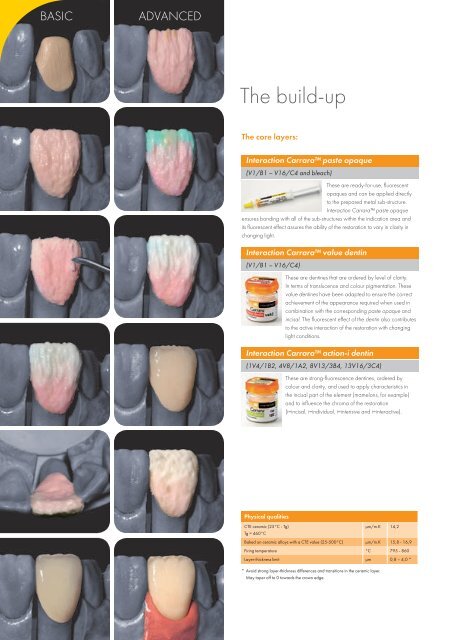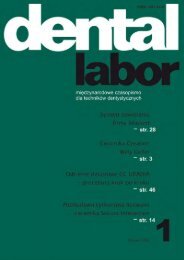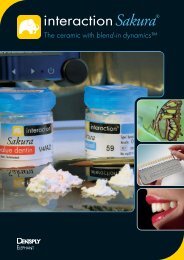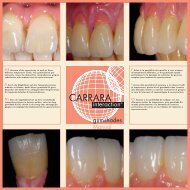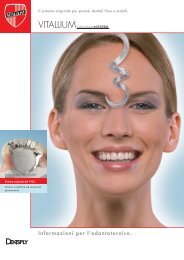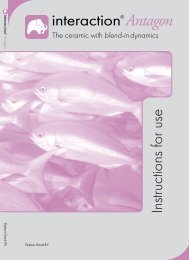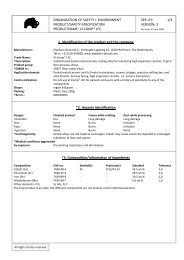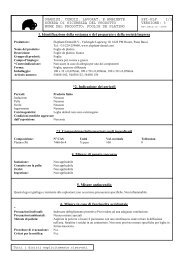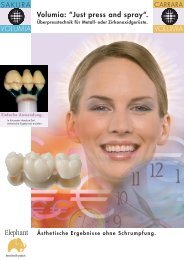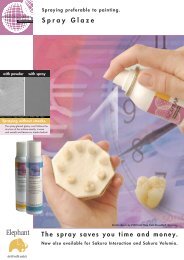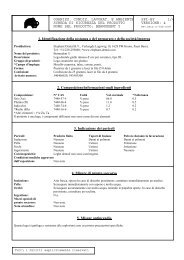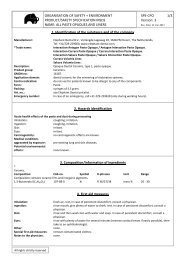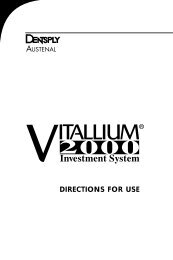Interaction Carrara - Elephant Dental
Interaction Carrara - Elephant Dental
Interaction Carrara - Elephant Dental
You also want an ePaper? Increase the reach of your titles
YUMPU automatically turns print PDFs into web optimized ePapers that Google loves.
BASIC<br />
ADVANCED<br />
The build-up<br />
The core layers:<br />
<strong>Interaction</strong> <strong>Carrara</strong> paste opaque<br />
(V1/B1 – V16/C4 and bleach)<br />
These are ready-for-use, fluorescent<br />
opaques and can be applied directly<br />
to the prepared metal sub-structure.<br />
<strong>Interaction</strong> <strong>Carrara</strong> paste opaque<br />
ensures bonding with all of the sub-structures within the indication area and<br />
its fluorescent effect assures the ability of the restoration to vary in clarity in<br />
changing light.<br />
8<br />
<strong>Interaction</strong> <strong>Carrara</strong> value dentin<br />
(V1/B1 – V16/C4)<br />
These are dentines that are ordered by level of clarity.<br />
In terms of translucence and colour pigmentation. These<br />
value dentines have been adapted to ensure the correct<br />
achievement of the appearance required when used in<br />
combination with the corresponding paste opaque and<br />
incisal. The fluorescent effect of the dentin also contributes<br />
to the active interaction of the restoration with changing<br />
light conditions.<br />
<strong>Interaction</strong> <strong>Carrara</strong> action-i dentin<br />
(1V4/1B2, 4V8/1A2, 8V13/3B4, 13V16/3C4)<br />
These are strong-fluorescence dentines, ordered by<br />
colour and clarity, and used to apply characteristics in<br />
the incisal part of the element (mamelons, for example)<br />
and to influence the chroma of the restoration<br />
(i=incisal, i=individual, i=intensive and i=interactive).<br />
Physical qualities<br />
CTE ceramic (25°C - Tg)<br />
µm/m.K 14,2<br />
Tg = 460°C<br />
Baked on ceramic alloys with a CTE value (25-500°C) µm/m.K 15,8 - 16,9<br />
Firing temperature °C 795 - 860<br />
Layer-thickness limit µm 0,8 – 4,0 *<br />
* Avoid strong layer-thickness differences and transitions in the ceramic layer.<br />
May taper off to 0 towards the crown edge.


